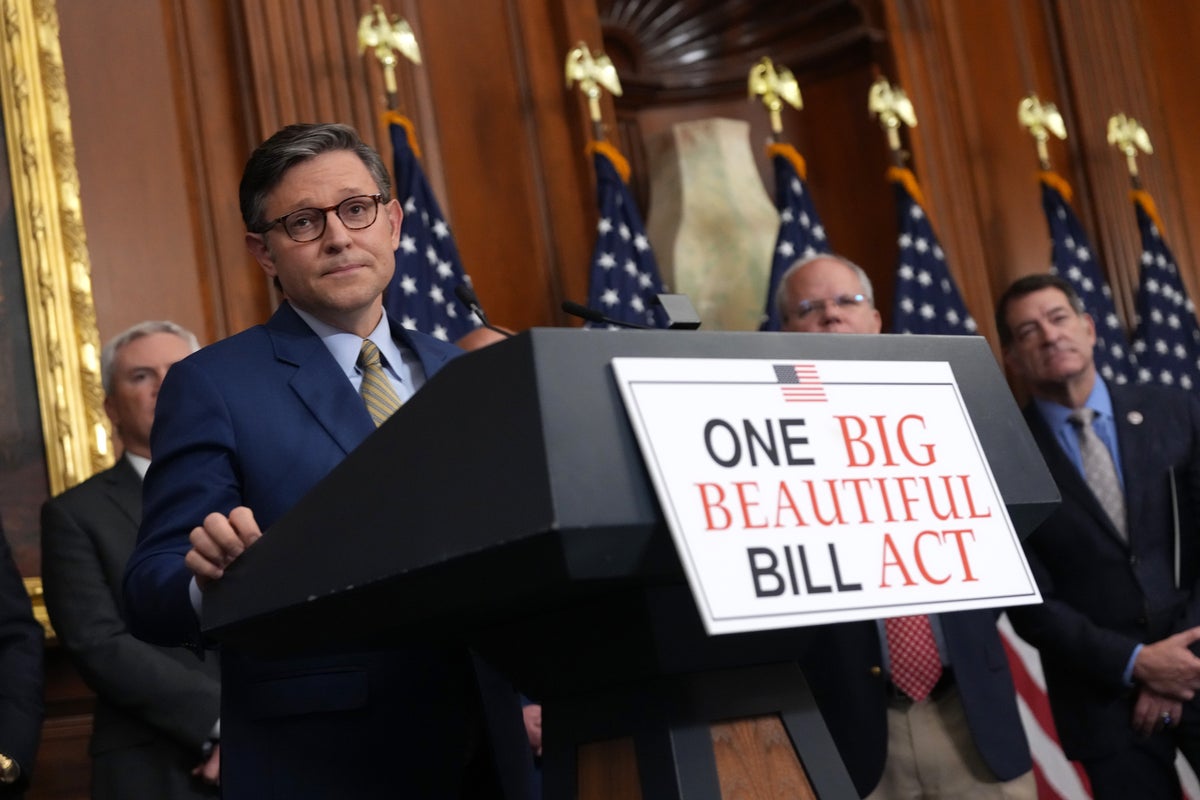Republican Megabill Called a ‘Nightmare Scenario’ for Clean Energy
The One Big Beautiful Bill Act, passed by the House of Representatives last week, would slow efforts to green the energy system as climate change accelerated
U.S. Speaker of the House Mike Johnson (R-LA) speaks to the media after the House narrowly passed a bill forwarding President Donald Trump’s agenda at the U.S. Capitol on May 22, 2025 in Washington, D.C.
CLIMATEWIRE | The clean energy transition may soon be on its own.
If you’re enjoying this article, consider supporting our award-winning journalism by subscribing. By purchasing a subscription you are helping to ensure the future of impactful stories about the discoveries and ideas shaping our world today.
“It is definitely massive headwinds,” said Sam Huntington, director of North American power research at S&P Global Commodity Insights. “If the bill goes through as the House has set it up, that is a pretty bleak scenario for the next few years, at least.”
S&P estimates cumulative wind, solar and battery installations would fall 20 percent through 2040. BloombergNEF has called the House bill — which still needs to clear the Senate — “the nightmare scenario for US clean energy advocates.”
Many analysts think the bill’s spending cuts will be watered down in the Senate. ClearView Energy Partners, a research firm, termed the bill “a high water-mark” for rollbacks in a note to clients.
But the U.S. policy direction is clear. As climate change accelerates, Republicans are slowing efforts to green the energy system.
At the same time, analysts say the clean energy transition is already on its way — with or without financial incentives.
“There are good reasons,” he added, “to use them other than climate change.”
The math of a warming planet is unrelenting. The United Nations International Panel on Climate Change has said the risks of extreme weather like floods, drought and wildfire increase each time the world warms by a tenth of a degree.
Planet-warming emissions reached a record 37.5 billion metric tons in 2024, according to the Global Carbon Project. The world has six years at 2024 levels before global temperatures are likely to surpass 1.5 degrees Celsius and 27 years before they eclipse 2 degrees, GCP estimated.
Emissions growth has slowed in recent years, but greenhouse gas levels have still edged higher thanks to a predictable pattern. While emissions in the U.S. and Europe fell, they grew in developing countries, particularly China and India.
Those patterns may be changing.
There are emerging signs of a structural emissions plateau in China, where electric vehicle adoption is surging and the country is bringing on large amounts of renewable electricity to complement its massive coal fleet. Indian emissions continue to rise on the back of rising coal consumption.
The U.S., meanwhile, may be on the verge of backsliding.
American emissions have trended downward for most of the last 15 years, including President Donald Trump’s first term, thanks to the combination of cheap natural gas, rising renewables deployments and stagnant electricity demand, which led to a wave of coal plant retirements.
But electricity demand is skyrocketing now, amid a boom in artificial intelligence and data centers, prompting America’s remaining coal plants to run harder and fueling increased demand for natural gas.
Three months is not enough time to constitute a trend, but the first quarter of 2025 offers a window of the potential road ahead. U.S. emissions were up 5 percent, or by 62 million tons, compared to the first quarter of 2024, according to Carbon Monitor, an emission tracker.
Half of that increase was due to rising emissions from the power sector, the industry most responsible for declining U.S. emissions in recent years.
That is the climate backdrop for discussions over Republicans’ budget bill. Analysts said solar is by far the best placed of U.S. clean energy industries to weather the storm. Even accounting for Trump’s recent tariffs, solar is likely to remain economically competitive with gas, analysts said.
But the picture is cloudier for batteries and downright gloomy for wind.
Five years ago, the economic and political stars appeared to be aligned for climate action, said McNally, the Rapidan analyst. Interest rates were low, meaning financing for clean energy projects was cheap. The world was not beset by any major wars. And large countries were led by governments prioritizing climate change.
Today, interest rates are high. Wars in Ukraine and the Middle East have prompted countries to prioritize energy security and affordability. And populist governments are in power in much of the world, McNally said.
“Every one of those stars have gone out,” he said.
Reprinted from E&E News
Benjamin Storrow is a reporter for Climatewire.
E&E News provides essential energy and environment news for professionals.
Source: www.scientificamerican.com
